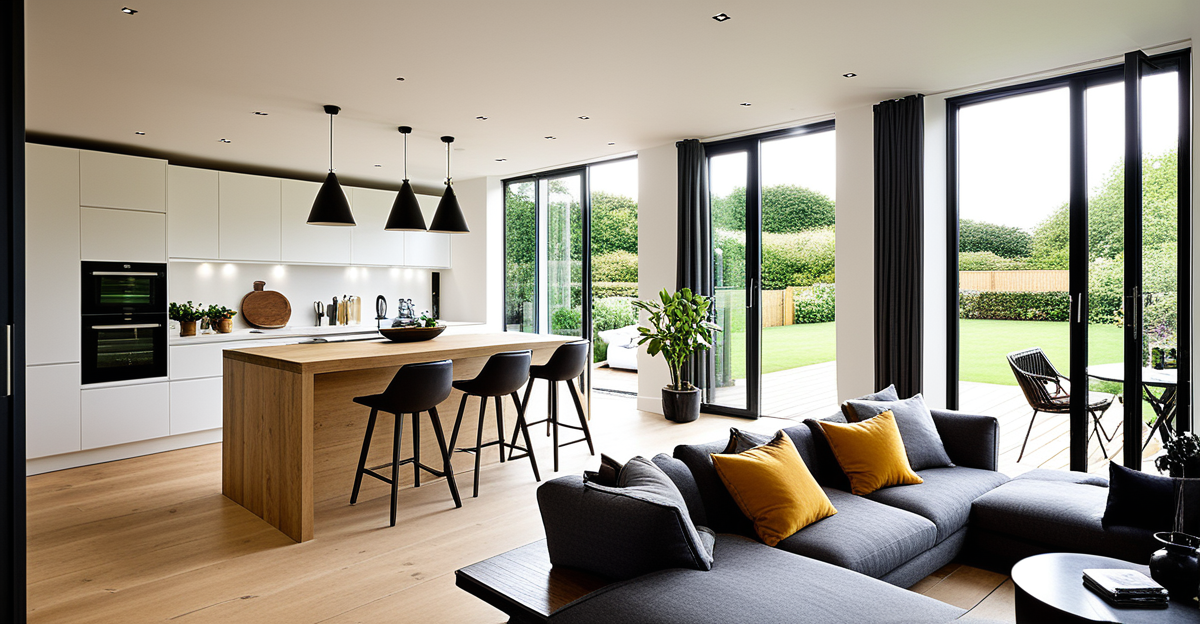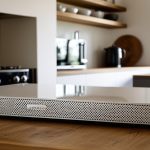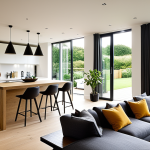Key Ways UK Home Design Impacts Well-being
The UK home design plays a crucial role in shaping residents’ well-being by influencing both mental and physical health. The home environment is more than just shelter—it affects stress levels, comfort, and overall health benefits. For example, typical UK architectural features like sash windows, high ceilings, and bay windows can enhance natural ventilation and lighting. These elements reduce indoor air pollutants and improve mood, showing a clear link between design and well-being.
Design choices also impact daily comfort. Thoughtful room placement and noise reduction strategies help lower stress and encourage relaxation. For instance, separating active zones, like kitchens, from quiet areas, such as bedrooms, supports better sleep quality.
In parallel : How can you efficiently organize your UK kitchen space?
In summary, the design of UK homes directly affects well-being by fostering calm, improving air quality, and promoting a connection with natural light—critical factors for mental clarity and physical health. Understanding these connections helps homeowners prioritize changes that boost comfort and health benefits sustainably.
Essential Elements of Healthy UK Homes
A healthy home features key elements that directly affect residents’ well-being. In the typically damp UK climate, ventilation is crucial. Proper airflow reduces humidity and prevents mold growth, improving indoor air quality—one of the most important factors for physical health. Homes designed with effective ventilation systems maintain fresher air, which benefits respiratory health and overall comfort.
In the same genre : How Can Upgrading Your UK Home Furniture Improve Your Daily Routine?
Natural lighting is another vital component. UK homes often face overcast skies, so design strategies that maximise daylight—like large windows, skylights, and reflective surfaces—help regulate circadian rhythms and boost mood. Studies show increased natural light reduces fatigue and supports mental clarity.
Thermal comfort and insulation also play pivotal roles. Good insulation stabilises indoor temperatures, conserving energy and creating a comfortable environment year-round. This reduces stress linked to temperature fluctuations and cuts heating costs, contributing to both financial and health benefits. Features like double glazing and draught-proofing are common UK-specific design responses that enhance well-being by keeping homes warm and reducing noise pollution.
In summary, focusing on ventilation, natural light, and thermal comfort in UK home design generates a healthier living environment with lasting health benefits.
Optimising Layout and Space in UK Living Spaces
Efficient home layout is vital in UK homes, especially where space is limited. Well-planned spatial design can enhance mental clarity by reducing clutter and creating purposeful zones for different activities. This separation fosters relaxation by making each space feel distinct and functional.
In small UK homes, challenges like irregular shapes or limited square footage require creative solutions. Multifunctional rooms and flexible furniture play key roles. For example, a dining area can double as a workspace, while foldable beds free up room during the day. Such adaptability supports comfort and reduces stress by maximising usability without overcrowding.
Zoning is another effective strategy. Defining areas for rest, work, and socialising helps regulate daily routines and supports emotional well-being. Clear boundaries between active and quiet zones, like separating a noisy living room from a calm bedroom, are especially beneficial in compact layouts.
Together, these approaches to home layout and functional space promote healthier living environments. They help residents optimise their homes for both activity and rest, supporting overall well-being through smarter use of the limited space typical in the UK.
Integrating Nature into UK Homes
Bringing nature indoors through biophilic design significantly boosts well-being in UK homes. This approach fosters a strong connection to nature, which reduces stress and enhances mental clarity. Especially in urban areas where green space is limited, indoor plants offer a simple yet effective way to introduce natural elements.
Popular indoor plants in UK climates include snake plants, spider plants, and peace lilies. These species thrive with minimal care and improve air quality by filtering pollutants, supporting a healthier home environment. Indoor gardening also encourages mindfulness and relaxation, contributing to overall health benefits.
Beyond plants, access to a UK garden—whether private or shared—provides vital physical and psychological benefits. Gardens offer space for exercise, social interaction, and exposure to fresh air and natural light. Even small balconies or communal green areas can serve as restorative refuges, particularly important in densely populated UK settings.
Incorporating nature into home design creates a sense of calm and vitality. This integration supports both mental and physical health, making it a valuable aspect of thoughtful UK home design aimed at improving residents’ well-being.
Evidence and Expert Insights on Home Design and Well-being
Experts increasingly agree that UK home design significantly influences residents’ well-being. Recent UK-based studies provide concrete evidence linking thoughtful design choices with health benefits. For example, research from leading universities demonstrates that homes with ample natural light and effective ventilation report lower levels of stress and respiratory issues. This aligns with UK health professionals emphasizing the importance of a well-ventilated home environment, particularly due to the country’s damp climate.
Architects specialising in UK housing highlight that integrating traditional features such as large windows and insulated walls improves both thermal comfort and mental health. As one UK architect notes, “Designs that prioritise air quality and daylight transform living spaces into sanctuaries, enhancing well-being.” Such expert insights underpin design innovations focused on creating healthier homes.
Notable case studies in urban UK areas reveal how upgrading insulation and integrating ventilation systems lead to measurable reductions in energy costs and increased occupant satisfaction. These findings offer practical proof that investing in good UK home design delivers tangible health benefits. Overall, expert opinion and research underline the potential for design to improve daily comfort, reduce stress, and support long-term physical and mental health.
Actionable Tips to Enhance Well-being in UK Homes
Small changes in UK home design can yield significant health benefits by improving the home environment. For example, enhancing ventilation with simple DIY solutions such as installing trickle vents or using extractor fans in kitchens and bathrooms reduces humidity and indoor pollutants. This supports respiratory health and overall comfort—a crucial factor in UK’s often damp climate.
Maximising natural lighting is another practical step. Rearranging furniture to keep windows unobstructed or adding reflective surfaces like mirrors amplifies daylight, helping regulate circadian rhythms and boost mood. Even small adjustments, like using light-coloured curtains, can make a noticeable difference in brightening rooms.
Thermal comfort improvements are also accessible. Draught-proofing windows and doors with UK-sourced sealants reduces heat loss and external noise, creating a calmer and warmer home environment. These measures lessen energy costs and reduce stress linked to fluctuating temperatures.
Lastly, adopting flexible, multifunctional furniture adapts to small UK living spaces, supporting better well-being by reducing clutter and promoting relaxation. These straightforward, actionable tips demonstrate how thoughtful, localised improvements to UK homes improve both daily comfort and long-term health benefits.







